The Doom Bloom
The water looks like blood, bloated fish bob pathetically on the surface. The smell of death is everywhere…
This horrific image is what often springs to mind when hearing the terms “algae bloom,” “plankton bloom” or “red tide.” While these negative events are the ones most commonly highlighted in the media, the vast majority of plankton blooms are actually benign. Here are some answers to common questions about these impressive aquatic events:
What is a plankton bloom?
To answer that question, we should first explain what plankton are. “Plankton” are organisms that drift through the water, unable to swim against currents and thus, end up where the water takes them. There are two main types of plankton: phytoplankton and zooplankton. Generally speaking, Phytoplankton include all planktonic plants and Zooplankton include all planktonic animals. While most plankton are quite small, some larger animals are also considered plankton because they are such poor swimmers. Jellyfish are prime examples of this.
A plankton bloom refers to an accumulation of plankton in an area. Blooms are usually caused by weather events, converging currents, or huge reproductive events. Blooms are usually visible due to the pigmentation (colour) of the organisms causing the bloom.
What is an algal/algae bloom?
An algal bloom is a plankton bloom made up of Phytoplankton (planktonic plants). The most common phytoplankton species that cause blooms are dinoflagellates and diatoms. Cyanobacteria are sometimes lumped into this category even though they’re actually a form of bacteria, not algae.
Dinoflagellates are single-celled phytoplankton that are usually smaller than a grain of sand. About half of the species photosynthesize (turn light and CO2 into oxygen and sugar), and the other half will eat prey in addition to photosynthesis. Dinoflagellates have two flagella (think the little tail on sperm) that they use to move through the water.
Diatoms are the largest group of phytoplankton and all are photosynthetic. They do not have flagella and are generally non-motile. Diatoms have an oily substance that is released as they die and sea foam can be produced by waves and wind churning up water full of dead diatoms.
Cyanobacteria, despite being a bacteria, is often called blue-green algae and they, like dinoflagellates and diatoms, can photosynthesize. Cyanobacteria are usually the culprits behind green algae blooms in freshwater lakes, ponds, and untreated swimming pools.
What is a red tide?
A red tide refers to a plankton bloom that turns the water in a certain area noticeably red. Dinoflagellates are usually the plankton group that causes red tides. Most dinoflagellates range in colour from tomato soup red to rust brown and every shade in between.
Not all red tides are caused by algae blooms, however. Some, especially those in tropical areas, can be caused by coral reproduction. Some larval stages of coral are bright red. If there is a reproduction event millions can be released into the water at once, turning it red.
Are plankton blooms dangerous to humans?
They can be, but not usually.
There are quite a few species of phytoplankton that contain toxins. These toxins are rarely in concentrations high enough to hurt a person swimming in a bloom, but when ingested in high quantities they can be fatal.
The big example of this is shellfish poisoning. Shellfish such as mussels, clams, oysters, and scallops, are filter feeders. This means that they pull water through their bodies and filter out the plankton (which they then eat). If these shellfish are eating toxin-containing phytoplankton, that toxin is stored in their bodies. The toxin does not affect the shellfish, but when stored in such high concentrations it can definitely kill a human that eats contaminated shellfish.
There are four distinct kinds of shellfish poisoning. Amnesic shellfish poisoning (ASP) is caused by a neurotoxin produced by diatoms. A human that eats shellfish contaminated with this toxin can suffer from permanent short-term memory loss, brain damage and death. Diarrhetic Shellfish Poisoning (DSP) as you may be able from the name, causes severe diarrhea and abdominal pain. This one won’t kill you, but your butt certainly won’t thank you.
Neurotoxic Shellfish Poisoning (NSP) is caused by a brevetoxin produced by dinoflagellates. This is another one that has no reported fatalities, but it will cause severe nausea and some slurred speech. “No, I haven’t been drinking, just had some oysters for lunch.” Paralytic Shellfish Poisoning (PSP) results from saxitoxin produced by a dinoflagellate called Alexandrium. This particular toxin can stay in the tissue of certain bivalves (like butter clams) for up to two years! It causes a huge range of symptoms – tingling lips and extremities, slurred speech, confusion, difficulty moving, nausea, vomiting… the list goes on.
Long story short, be extremely careful with where and when you harvest shellfish. Now that I’ve planted the seed of algae-related fear in your hearts and bums, it’s important to note that most plankton blooms are made up of non-toxic phytoplankton.
Are plankton blooms dangerous to other animals?
Shellfish poisoning is something that affects non-human animals as well. Sometimes, if there are high concentrations of a toxin-bearing phytoplankton in the water, fish, mammals, and birds can be affected simply be ingesting the water. This is rare, however.
More often, fish will die after an algal bloom. Even though phytoplankton add a lot of oxygen through the water via photosynthesis, once they die the opposite is true. The dead phytoplankton starts being eaten by bacteria that use up the oxygen in the water. This creates something called an anoxic zone and this is what kills the fish. Without oxygen, they suffocate. This is more common in lakes than in the ocean simply because there is more water movement and space to swim away in the ocean.
How does human activity affect plankton blooms?
Phytoplankton is present throughout the year, but blooms are usually in the Spring or Summer. Phytoplankton need light, warmth, and nutrients to reproduce and the warm months are when this happens. One of the limiting factors on their growth is Nitrogen in the water. More Nitrogen means more blooms, and humans are great at putting nitrogen in the water (mostly via burning fossil fuels and runoff from fertilizer and industry). Climate change and the gradual warming of the earth’s oceans will likely result in more algae blooms as well.
Is there anything good about plankton blooms?
100% yes! Again, most plankton blooms are made up of non-toxic phytoplankton. Filter feeders and larval forms of thousands of marine animals depend on these plankton events. Phytoplankton is essentially the base of every marine food web! They are also a huge source of oxygen production. Phytoplankton are responsible for an incredible 50-80% of the entirety of the earth’s oxygen. That range accounts for time of year and location.
It is important to recognize the importance of these events, but also keep in mind that the frequency and range of these blooms is in a careful balance. As the climate shifts and human activity continues to grow and change over time, the frequency and scope of plankton blooms, like other natural phenomena, will likely change as well.




